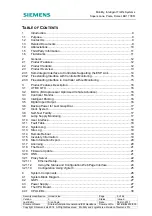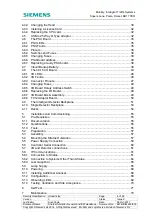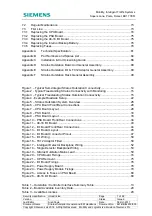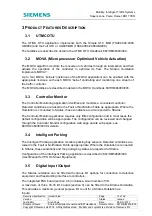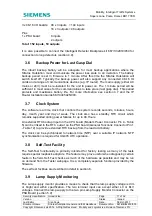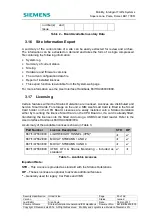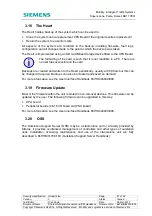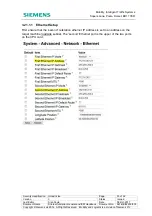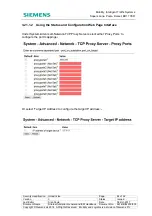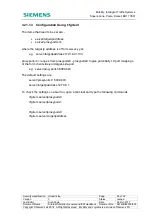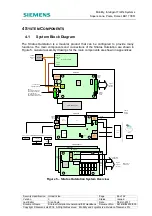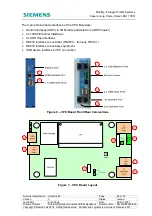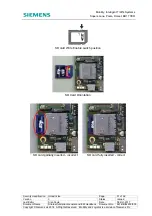
Mobility, Intelligent Traffic Systems
Sopers Lane, Poole, Dorset, BH17 7ER
Security
classification Unrestricted
Page
17 of 92
Version
3
Status
Issued
Last Editor
Alan Doyle
Date
05-Oct-2017
Document Name
Stratos Outstation General and ICM Handbook Document No. 667/HB/52250/000
Copyright © Siemens plc 2014. All Rights Reserved. Mobility and Logistics is a division of Siemens Plc
3 x 48-16 I/O boards: 48 x 3 inputs = 144 inputs
16
x
3
outputs
=
48
outputs
Plus
1 x PSU board:
8 inputs
2
outputs
Total: 152 inputs, 50 outputs
It is also possible to connect the Intelligent Detector Backplane kit 667/1/32910/950 for
connection to loop detectors (section 4.9).
3.6
Backup Power for Last Gasp Dial
The inbuilt backup battery will be adequate for most backup applications where the
Stratos Outstation must communicate the power loss state to an in-station. The battery
backup period is set in firmware to 1 minute. After this time the Stratos Outstation will
switch itself off. Typically the backup power will also support any connected 48-16 IO
cards and a range of communications devices (e.g. IP router). The main supply (either AC
mains or 24V) must be re-instated for the unit to power on. The 1 minute period will be
sufficient in most cases for the communications to take place (last gasp dial). This period
protects and maximizes battery life. For more information see section 4.7 and the IP
Router Installation Guide 667/CI/45025/000.
3.7 Clock
System
The software real time clock that controls the system records seconds, minutes, hours,
day, month, year and day of week. The clock also has a standby RTC circuit which
remains supported during power failures for up to 48 Hours.
An external RTC backup input on the CPU board (Modem Power Connector Pin 4 - Table
5) can be linked to the RTC output on the PSU board (General Functions Connector Pin 1
- Table 12) to provide extended RTC backup from the lead acid battery.
The clock can be synchronised to network time (NTP) over a suitable IP network. NTP
synchronisation is required for UG405 UTC operation.
3.8 Self-Test
Facility
The Self-Test functionality is primarily intended for factory testing as many of the tests
require special loopback adaptors. The feature may prove useful when diagnosing certain
faults in the field. Self-Test checks as much of the hardware as possible and may be run
on demand from the Tester webpage. It is a completely separate function provided by the
firmware.
The self test facilities are described in detail in section 6.
3.9
Lamp
Supply
Monitoring
The Lamp supply monitor provides a means to check that the lamp supply voltage is dim
or bright and within specification. The two terminal input can accept either LV or ELV
voltages. Connect the lamp supply to the two pin Lamp Supply Monitor Connector on the
PSU Board (section 5.9).



